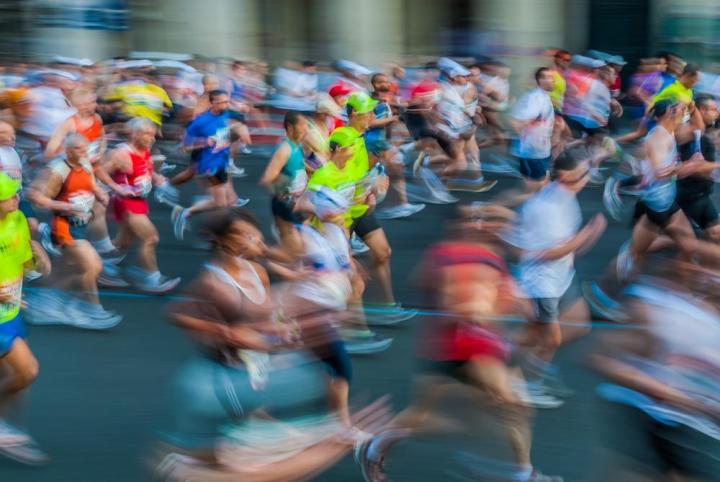
I guess there’s a good time and a bad time to snap a selfie. Taking one at the start of a 10k run with 30,000 competitors behind you clearly falls into the latter category, as triathlete Joyce Cheung Ting-yan discovered earlier this year in Hong Kong.
According to the South China Morning Post, Cheung’s unwise decision to suddenly stop and take out her smartphone camera during the race in February resulted in a mass pile-up of runners “which saw many competitors cross the finish line bloodied and bruised.”
Fearing a repeat of the incident at next year’s event – one of three major running contests that includes the Hong Kong marathon – race organizers have already launched a campaign discouraging runners from using their handsets while running. They’re even considering banning phones altogether.
“The problem was that a number of runners were trying to take self-portrait pictures using their smartphones,” Benjamin Hung Pi-cheng, boss of sponsor Standard Chartered Bank, told the Post. “It not only endangers themselves but endangers a lot of people running behind them.”
Hung is urging runners to “apply a little bit of common sense and discipline” during the race.
Organizers of the event have already embarked on an anti-selfie campaign using Facebook, TV and radio to spread the word. Officials are even expected to line the route holding up message boards warning people not to take photos during the race.
They may have a real challenge on their hands, however, as a recent report revealed that selfies are now the most popular genre of photography. Will runners at next year’s event really be able to resist using their handset to snap a sneaky self-portrait along the way?
As for Joyce Cheung Ting-yan, she may well be tempted to once again whip out her phone in an effort to engineer a repeat of last year’s carnage – she did, after all, go on to win the race.
[Via AFP / SCMP] [Image: Ostill / Shutterstock]


